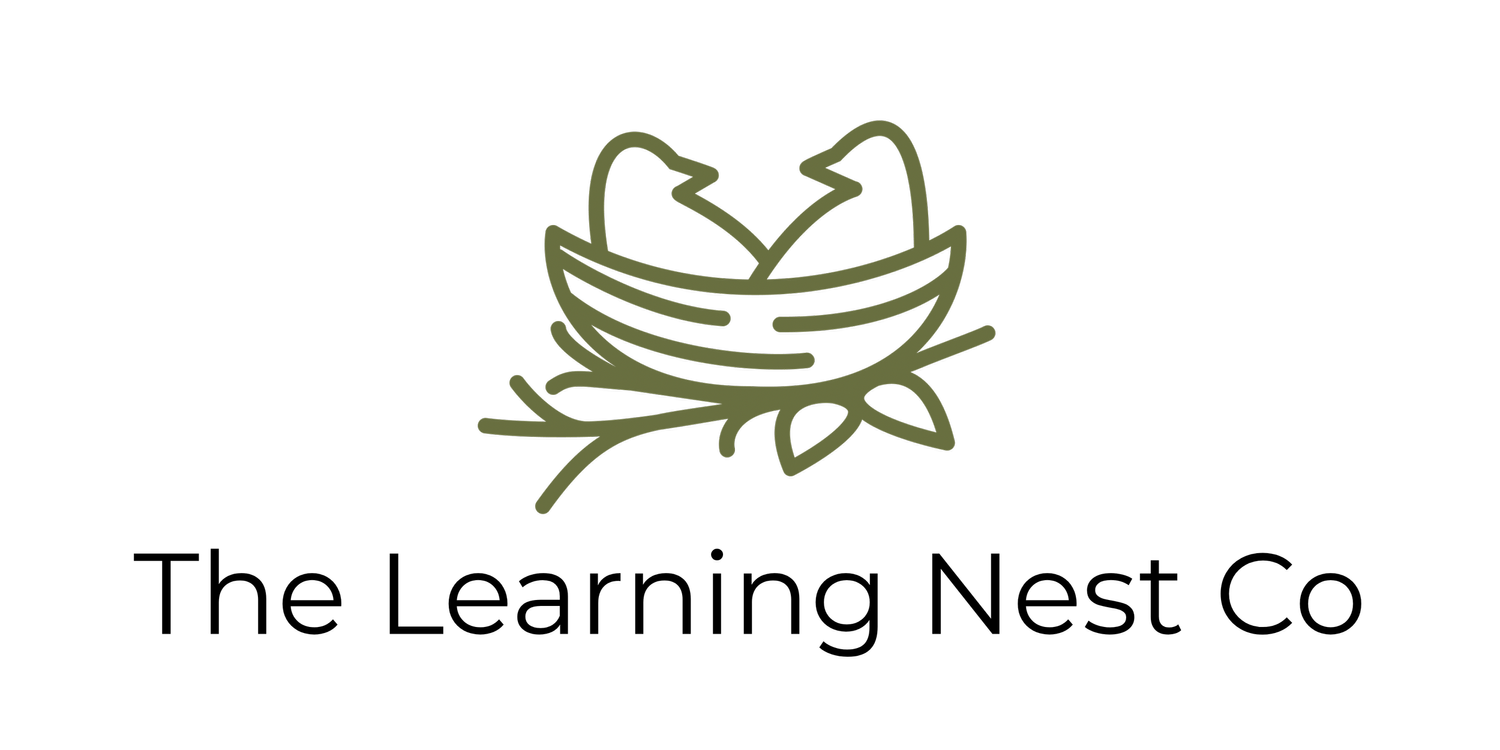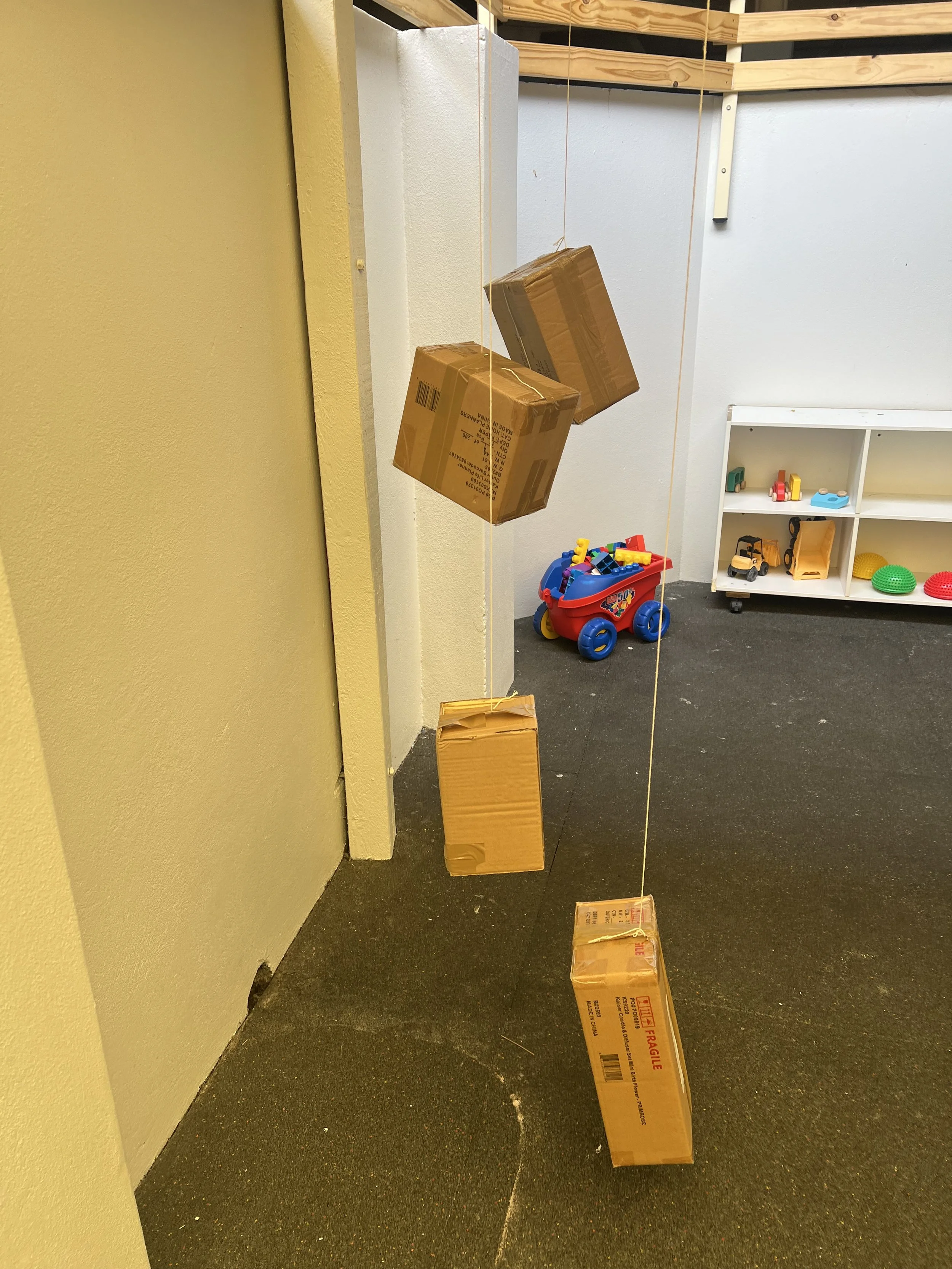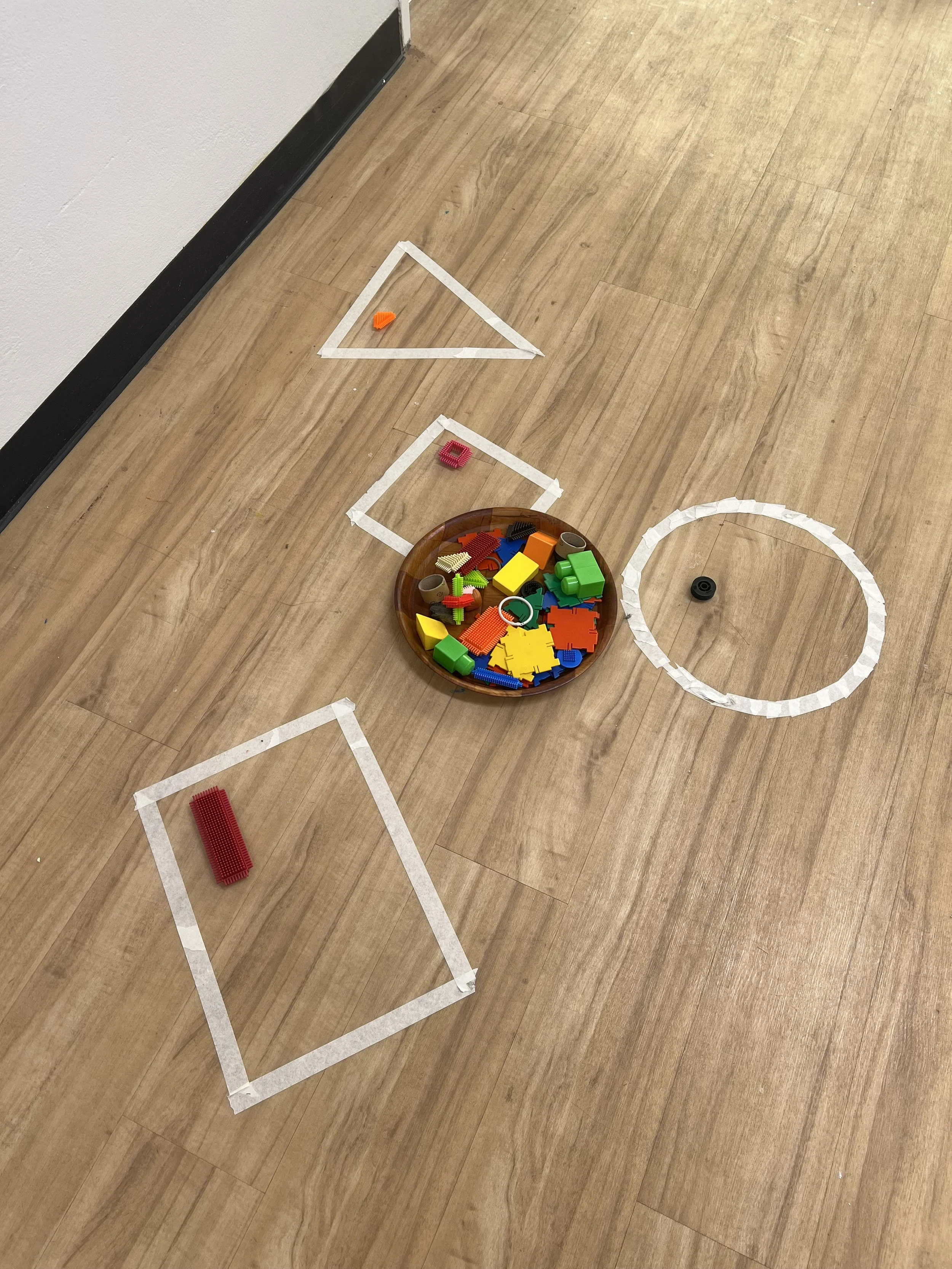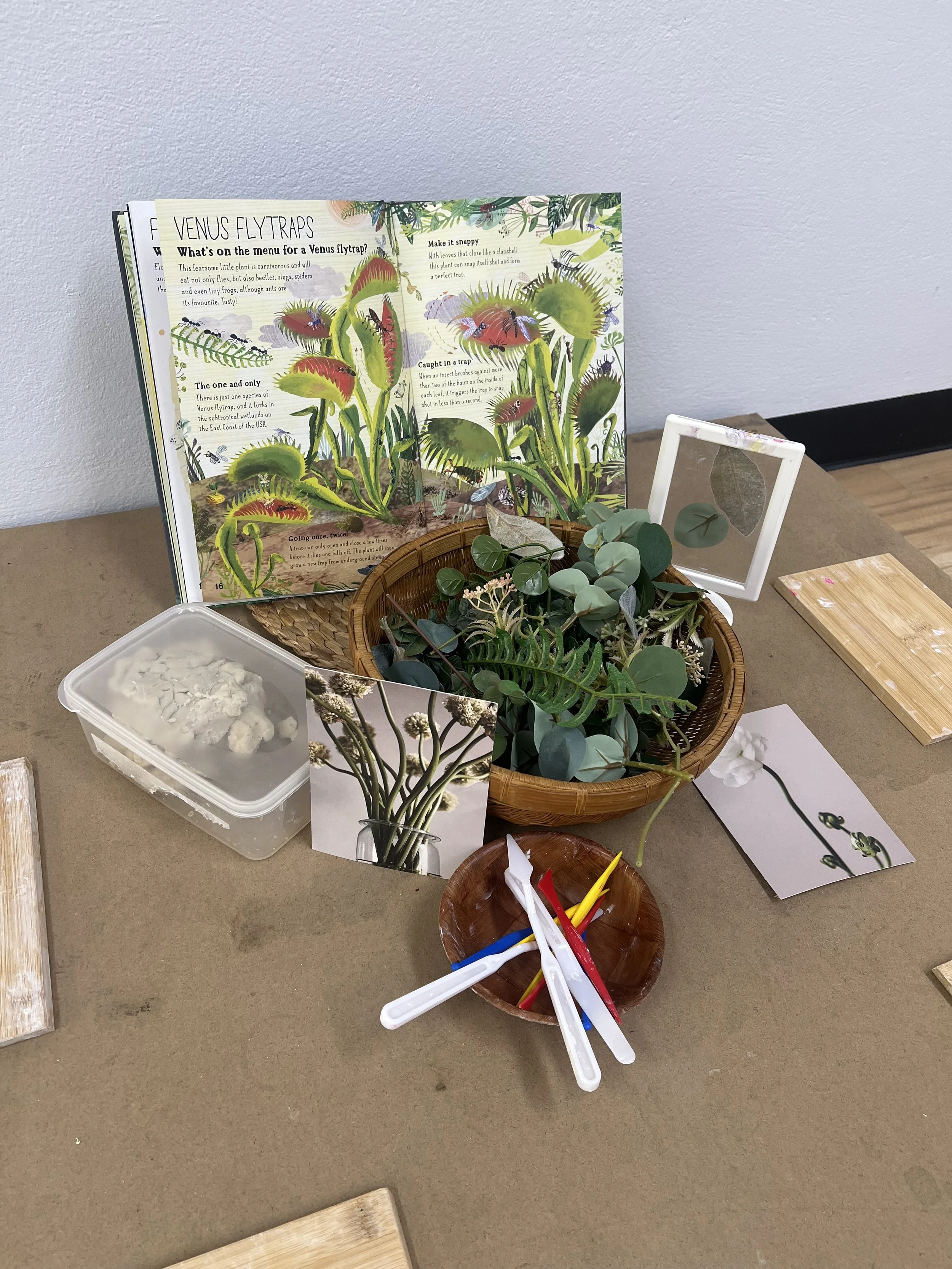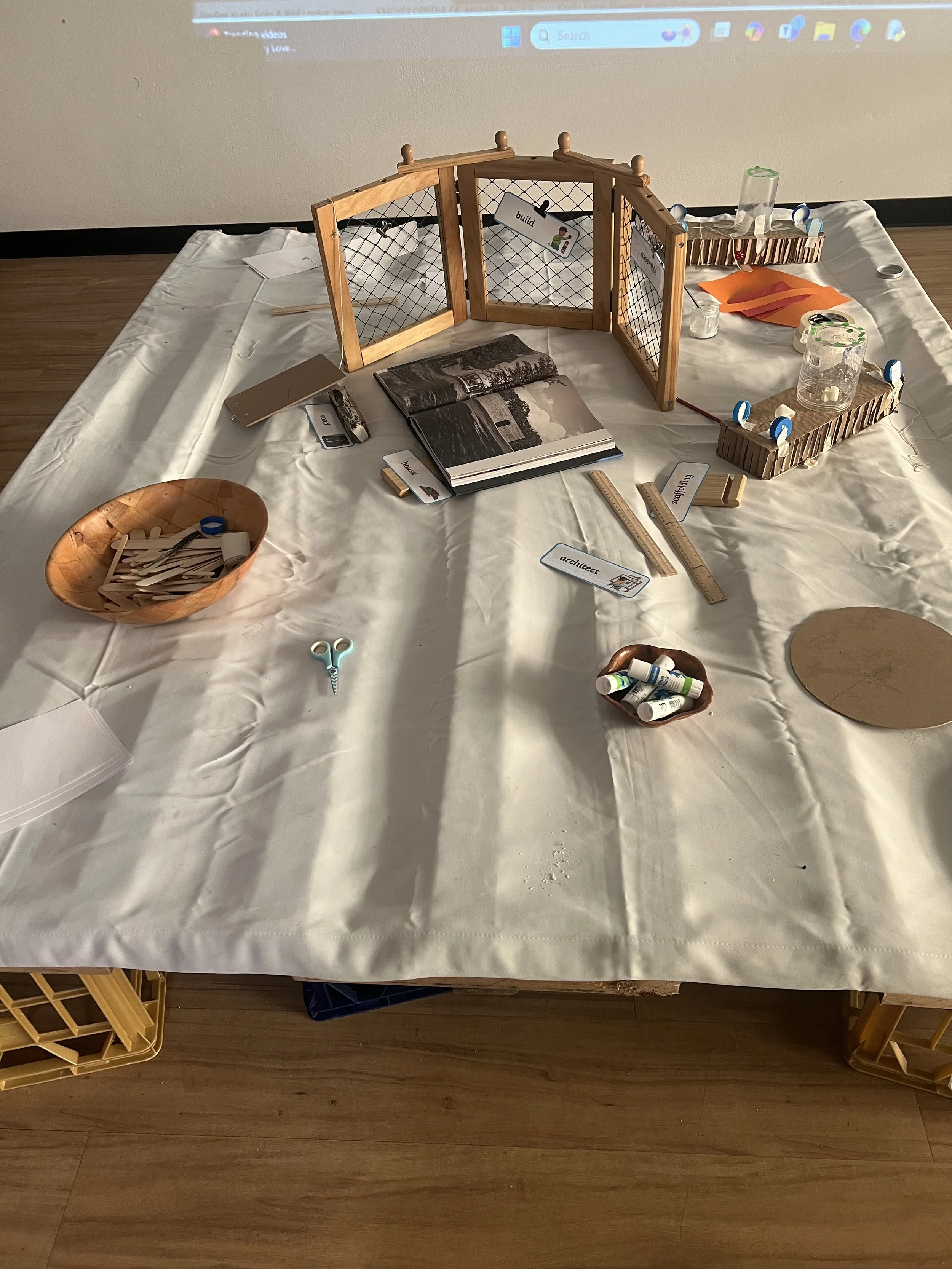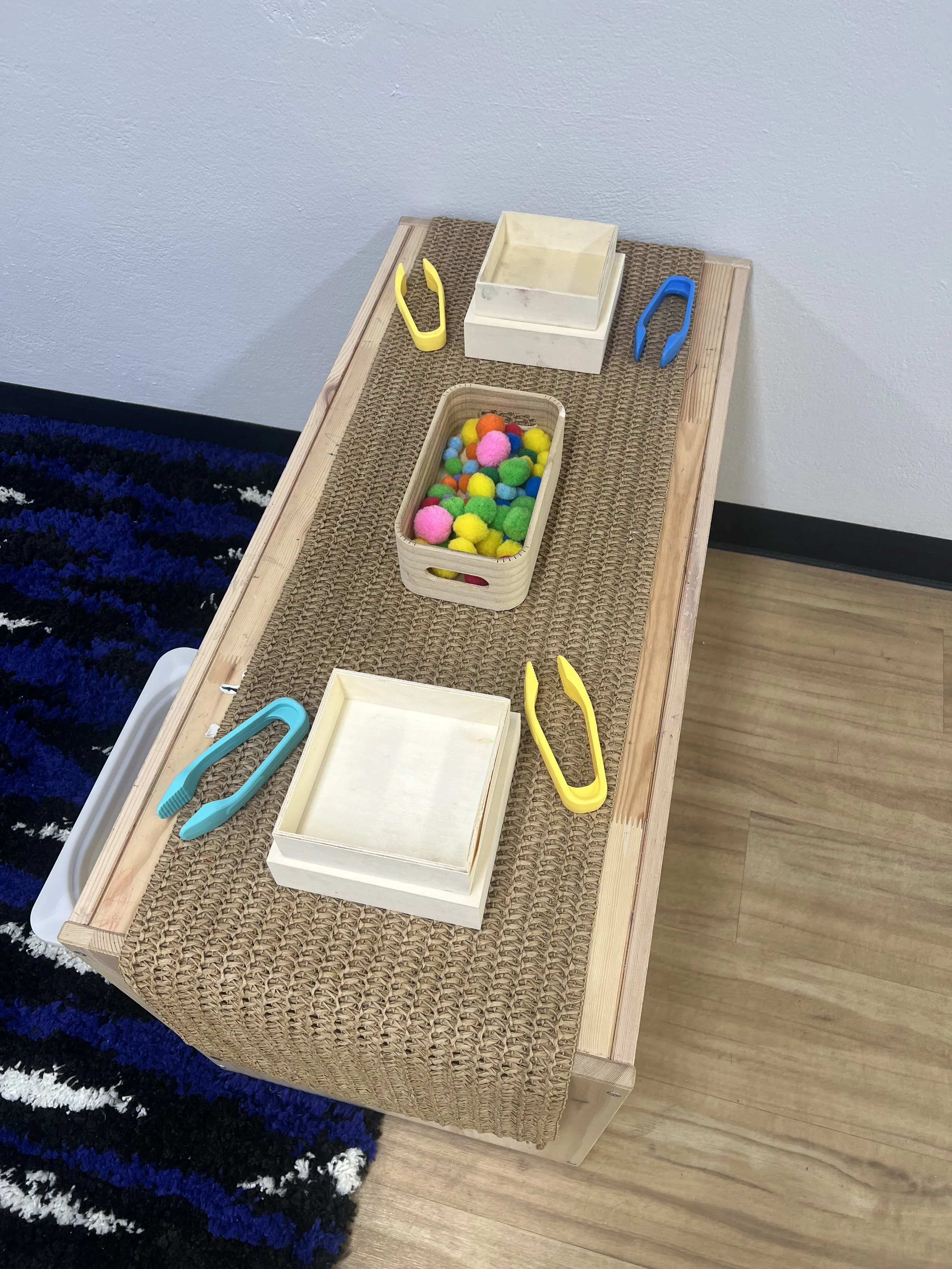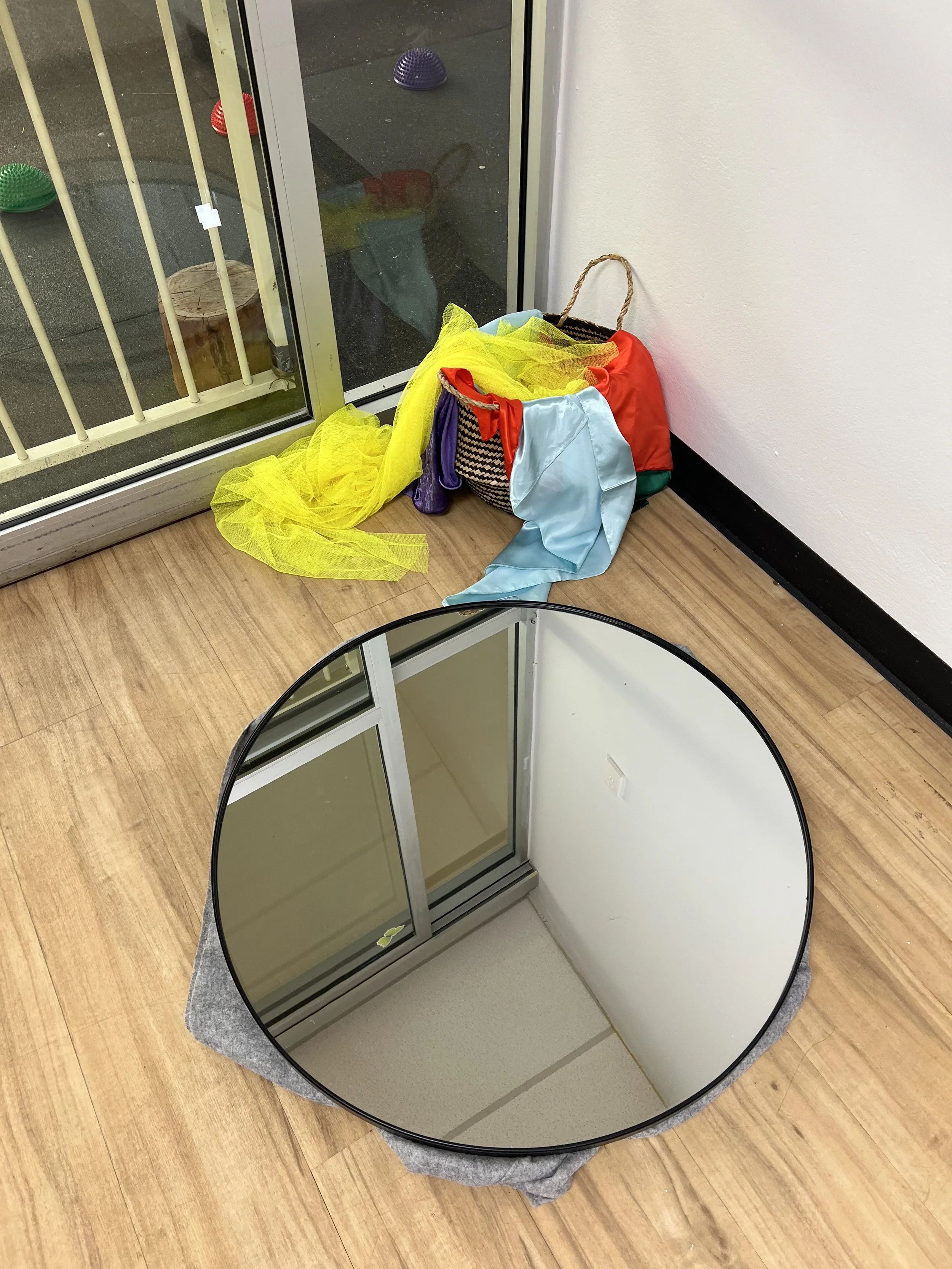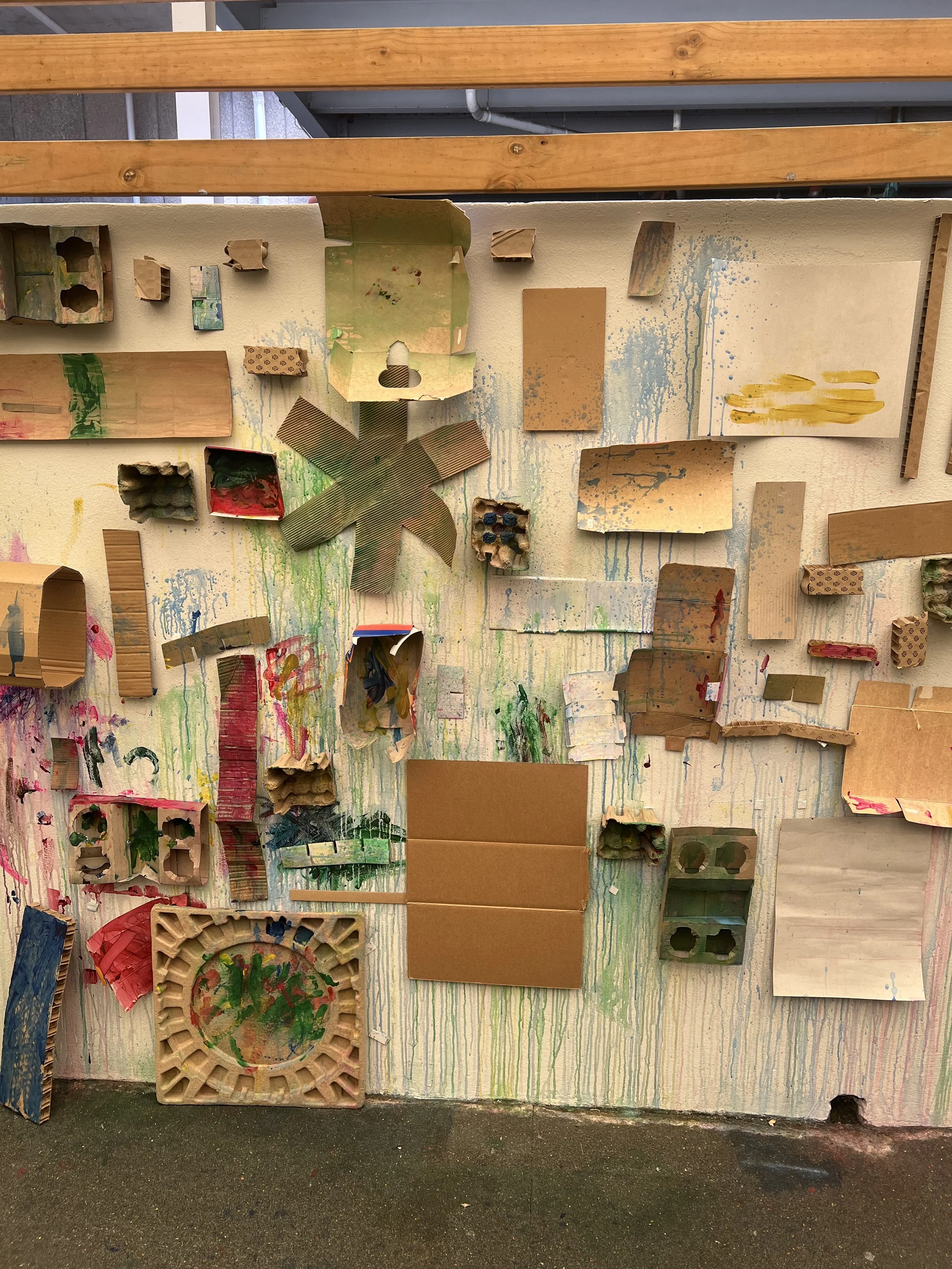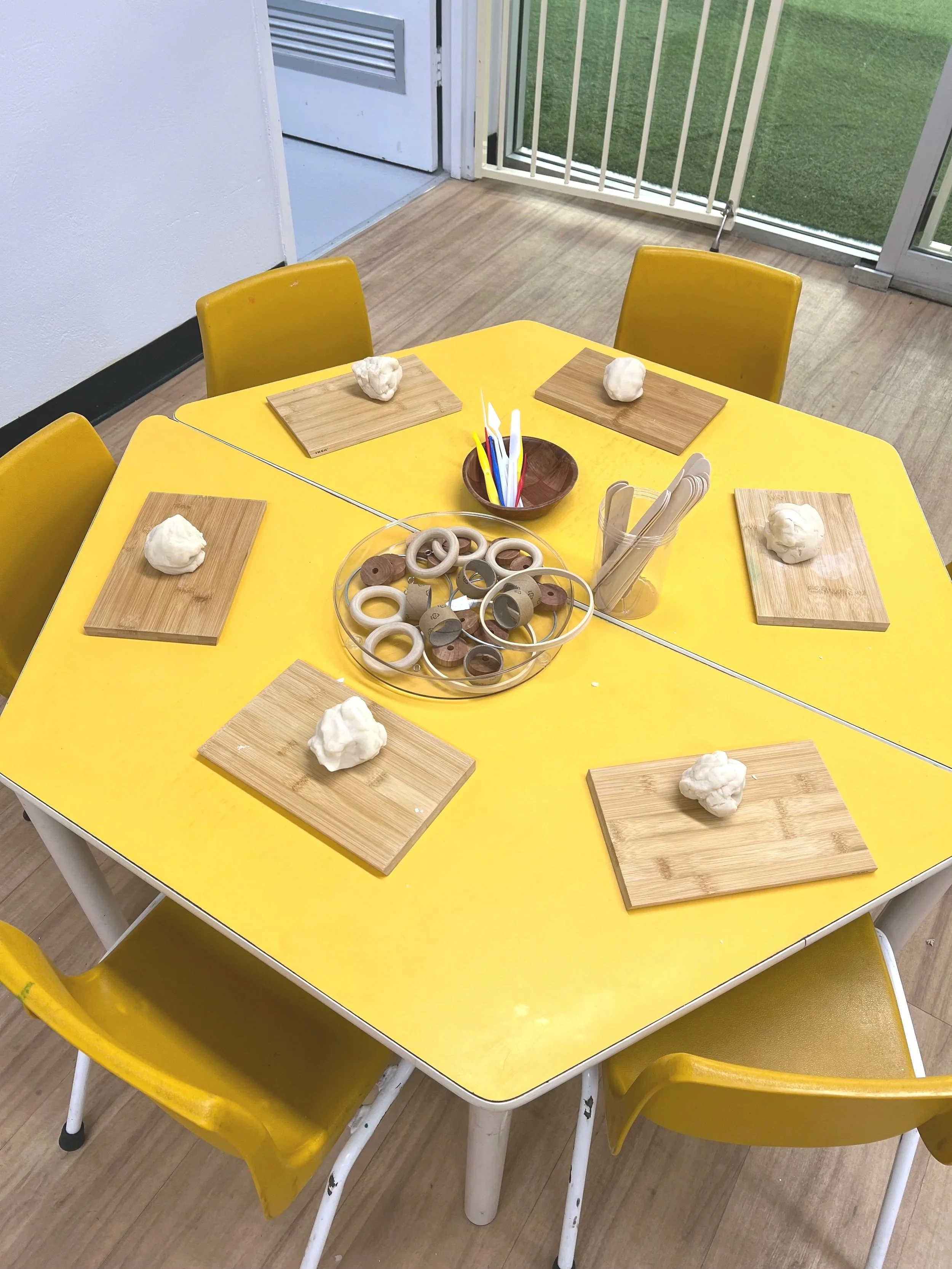
Activity Overview
Please see below our targeted activities for this session and ideas as to how you can implement them at home.
Literacy Focus: Phonics
Our older children, our first sound for this program is /s/.
This activity encourages children to write the letter of this sound in a fun way. There is a larger piece of cardboard on the wall to help support children who are still developing their fine motor skills.
Opportunities for implementation at home
Drawing pictures of things that start with this sound such as - snake, square, sand etc.
Creating a space at home (such as a table/shelf) where you can place different items that start with this sound - e.g. spoon/salt/shoe etc.
Numeracy Focus: Shapes
This activity encourages children to have discussions when completing this activity. As children are sorting shapes into different categories, adults are encouraged to ask;
How many sides does that shape have?
How many corners does it have?
What is the difference between a rectangle and a square?
These conversations help children identify the different characteristics between the shapes.
Opportunities for implementation at home
Identifying common shapes that are in children’s home environment - e.g. what shape is the front door?
Using items readily accessible at home (e.g. playdoh, string, straws, paddlepop sticks etc.) to create shapes
Science Focus: Venus Flytraps
Following the interests of some children learning about plants, we have recently landed on the topic of Venus Flytraps. This activity is an opportunity to discuss what it is and how it is different to other plants we commonly see. The provided materials are for children to represent their thinking.
Often, children may also use the materials to represent other ideas they have too - even if they are completely unrelated to the activity.
Opportunities for implementation at home
Owning your own Venus Flytrap plant (can be purchased from places such as Bunnings)
Researching online about Venus Flytraps and where they originate from
STEM Focus: Houses
This activity has a focus on two key areas; 1. children representing their homes through their thinking, and 2. creating this using materials they choose.
This activity encourages an application of engineering to represent their thinking. Children are encouraged to draw their design before creating it to reference back to.
Opportunities for implementation at home
Using common household items to create their design - e.g. playdoh, sticky tape, sticks, paddlepop sticks etc.
Sitting outside with an adult and drawing what their home looks like
Extending to more common areas of reference if that is easier for children - e.g. Telstra tower, local library etc.
Fine Motor Skills Focus: using tweezers
This activity encourages children to use their fine motor skills by transferring the pom poms into their container. It may appear to be a simple activity, but this helps children to develop their skills to move towards other activities.
Opportunities for implementation at home
Using kitchen tongs to pick up a range of different items to transfer them from one bucket to another. Extension: have some items that both sink and float to transfer them.
Encouraging children to use tongs to serve themselves food - e.g. transferring slices of fruit onto their plate. This can be done with both regular and smaller sized tongs.
Infant Focus: Self-Identification
This activity encourages younger children to recognise themselves. By being placed on the ground, younger children will crawly over to this area and are likely to crawl over the mirror while looking down at themselves. This is a perfect opportunity for adults to help encourage conversation about what they can see. Additionally, other materials are available in this area which can be used to help demonstrate object permanence (e.g. peek-a-boo).
Extension: these materials can also be used to discuss textures and colours.
Opportunities for implementation at home
Placing mirrors down at a lower level for children to start to identify themselves, this can also be done by holding children up to higher mirrors (such as the bathroom) or by sitting in font of other mirrors (such as hallway mirrors)
Places pictures of themselves and/or other family members on the floor at home. This can be done on the floor or lower walls/fridge.
Art Focus: Junk Art
This activity encourages children to collaboratively work together to use materials provided to paint different sections on the art wall. This activity encourages not only creativity and fine motor skills but helps to foster skills such as sharing and negotiation in a shared space too.
Opportunities for implementation at home
Using a range of materials (such as from the recycle bin) to paint/spray etc.
Using coloured water (or plain water) to spray or paint onto materials
